One of my very favorite photographers is a global traveler. Surprised? We've interviewed Sherry Ott here on Wandering Educators, talking about following your travel dreams. Sherry lives and teaches in Vietnam, and I've learned a lot from her. She's inspiring! She ditched the corporate lifestyle for a new life, of change and travel and discovering her dreams. Sherry takes extraordinary photographs, as you are about to see. We were lucky enough to sit down and talk with Sherry about photography, impacting the world, and best photo tips. Here's what she had to say...
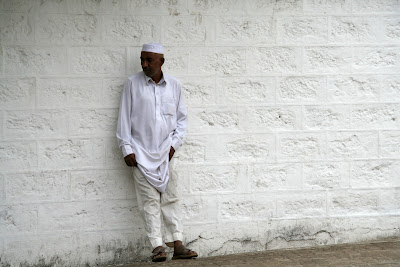
White wash - Kenya

Sari Wrap - India
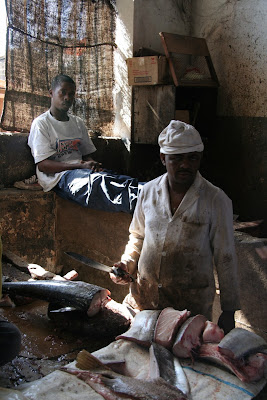
African Sushi - Tanzania
WE: How did you get interested in photography?
SO: As I started to travel internationally 10 years ago, I bought a little digital point and shoot camera to record my journeys. I first started taking pictures in Italy and when I would come back and share the photos everyone loved them. I found that I had a good eye for composition and I became energized by taking pictures of other countries.
I started planning my escape from corporate America 2 years in advance of leaving. I knew that I was going to travel around the world so I decided that I would use my 2 yrs of waiting in a useful way; I bought a digital SLR and started taking photography classes from a great school in Manhattan – PhotoManhattan. My teacher was fabulous and taught me so much. I spent the next two years doing photography around Manhattan and on my other international short trips honing my skills. I left on my around the world travel adventure in September of 2006 and that was when I really was able to put all of my learnings to use!
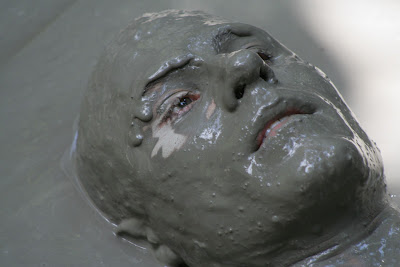
Muddy Waters - Borneo
Solicit a response - Italy
WE: How long have you been a photographer?
SO: Officially I’ve been selling photography since 2007. So it’s all relatively new to me. I am trying to network and learn more about the travel photography industry all the time, but as a latecomer to this profession, it is challenging! While I was back in New York City in 2008 I had a small exhibition of my global travels; a highlight in my career!
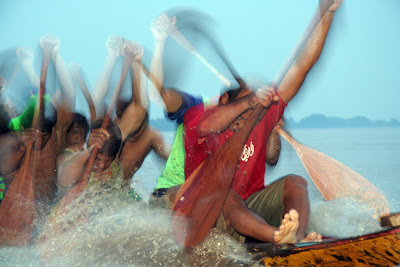
Fast and Furious - Laos

Sahara Colors - Morocco
WE: What is your favorite place to photograph? Or subject?
SO: I actually do a wide variety of photography – landscapes, nature, architecture, people, and documentaries. My common goal throughout these is to show people what’s out there in the far corners of the world.
Some of my favorite countries to do photography were India and Nepal because the people are so eager to have their photos taken. They follow you around and ask for a photo to be taken. Then, when you do take their photo, they have this amazing virginity to photography; they don’t give you a big toothy grin or poses, instead they give an intense stare right through the lens that has an amazing impact. It feels as if you can see their soul sometimes. After taking the picture, they don’t really even have an interest in seeing it on the screen which was always baffling to me. Many times they would just walk away satisfied you had somehow captured them or given them some attention.
One of my favorite subjects to photograph is people and their culture. I like to do more documentary style photography which includes people and their surroundings; not simply portraits. I find that it tells more of a story. Maybe it’s the writer in me wanting to come out – but my goal is to tell a story with my cultural photography and create understanding.
I also love to do photography in Vietnam of the motorbike culture. Vietnam is currently my home so I have a lot of opportunity to capture this unique and sometimes unbelievable part of Vietnamese culture. I also love to photograph markets in Asia and around the world – the grosser the better! I think markets around the world demonstrate our vast cultural differences!
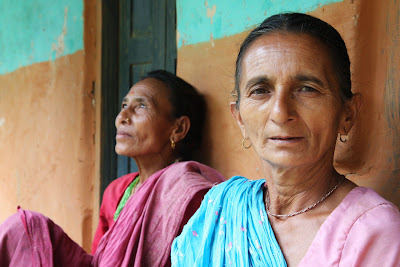
Contemplation - Nepal

Baby doll - Nepal
WE: How can photographers help change/impact the world, while they are traveling?
SO: Every time I click the shutter it is to show people what I’m seeing and experiencing in another part of the world. My goal is to create understanding; provide someone with a picture and let them form their own conclusions as opposed to the news telling them what to think. This is why the documentary style of photography is important to me because I want it to tell a story to the viewer and hopefully further educate them about the cultures of the world.
The other thing I attempt to do when I travel is to make prints of the pictures that I take of the people I have more meaningful interactions with and send them the photos. So many of the countries I travel to have so little; people love to have pictures of their families to share with others. I once was in Morocco and watched as a little boy in the desert saw a picture of himself for the first time. He stared at it in amazement trying to make sense of the whole situation; it was very moving.
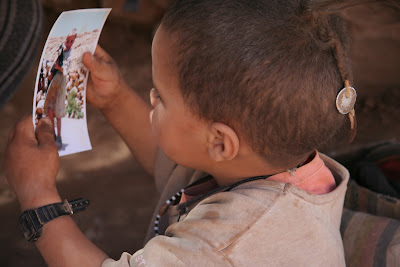
Seeing yourself - Morocco

Head first - Cambodia
WE: Are there rules in other countries people need to be aware of about who or what you can or cannot shoot?
SO: There are definitely some ‘rules’ you should follow; the universal one is always ask before taking a picture. Sure, it may be easy to put on a long lens and lurk around in the shadows and take pictures of people when they aren’t aware of it, but I’m inclined to say that the pictures are never as good as the ones where you actually have a connection with the subject. Eyes staring into the lens are powerful. Even though you don’t speak the language, you can easily point to your camera and mime taking a photo of them and then say yes or no shaking your head; they’ll understand and provide you an answer.
Different countries have different beliefs about taking photos, and I don’t know of any place that has all of these listed in a convenient list. Some countries don’t like to have children photographed as they feel it will take their soul. However the only way to figure this out is to ask (see the universal rule above!).
Also – I generally don’t pay for photographs as I think it’s degrading to the culture. In some countries they have become savvy to photographers and they ask for money/change if you take their picture. This is also a good reason to practice the universal rule of asking; else you may have someone running after you demanding money after you have ‘stolen’ their picture.
Finally, since I make a living taking other people’s photos, I happily let others take my photo. Since I live in Asia I frequently have people taking photos of me as I walk around town or travel. Unfortunately few people ask to take my photo, they just take it. It’s actually a good experience to be on the other side of the equation as it helps you appreciate why you should ask people first before taking their photo!
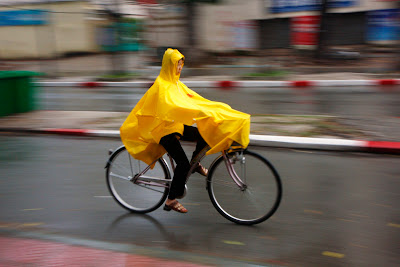
Cycling in the rain - Vietnam
Approaching storm - Mongolia
WE: Any tips you want to share?
SO: My best tip was given to me by a great photo journalist, Jonathan Taylor, whom I traveled with in Laos in order to improve my photo journalism skills. He taught me to capture the entire scene by using a wider angle to photograph people. I used to mainly use a telephoto to get those really nice, tight close-ups of people’s faces. However now I mainly use my 17 to 50mm lens to do candid people shots and I capture the entire scene and how they relate to it.
Another tip is that when you ask to take a photo of someone doing something interesting and they say yes, they normally stop what they are doing and pose and smile for the camera; exactly what you didn’t want to photograph! That’s ok though, go ahead and take a few of those photos and then stick around and continue conversing/interacting with them. Eventually they will forget that you are there and they’ll go back to doing what they were previously doing and then you can get the photos you want. Thanks to digital you can delete all of those toothy grins and poses if you’d like! The best photos are when you have made some type of connection with the person so they feel at ease with you and a lens in their face. Finally this generally works best when you are crouched down in a squat taking pictures from more of a street level as you are less conspicuous that way; you blend into the environment then.
Up in smoke - Mongolia
Mirror Images - Mongolia
WE: Is there anything else you'd like to share with us?
SO: It’s never too late to start following your dream. Yeah – I know that sounds a bit sappy; but it’s true. If you are interested in photography as a hobby and want to take it to the next level then look for some local classes first. Learn how to really use all aspects of your SLR. Practice these aspects by going out and doing ‘assignments’ in your local community. Get involved in your local camera groups or on online groups or listen to photography podcasts (there are tons on itunes for free)!
Always take your camera with you! I have trekked with my camera thru various deserts, up Kilimanjaro and other peaks, and in kayaks; it has become an extension of my body…just another appendage! All of these things have helped me delve further into the world of photography. I still have a long way to go and a lot of the world to see, but I can guarantee that I’ll be carrying my camera and lenses with me!
Gobi Ger - Mongolia
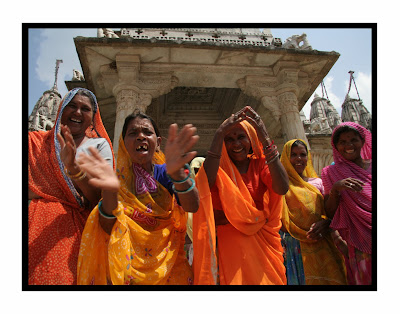
Songs of joy - India
WE: Thanks so much, Sherry! I've enjoyed your interview - and as always, your photos.
For more information, please see:
Travel Photography - www.sherryott.smugmug.com
Travel Website - www.ottsworld.com
Want to take a Career Break and travel? Check out my latest website! www.briefcasetobackpack.com
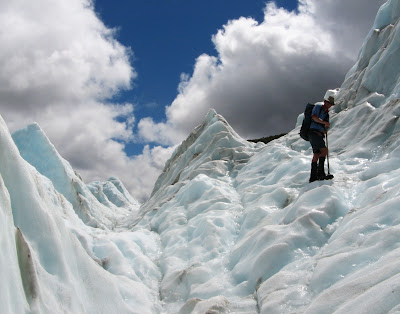
Ice Mountain - New Zealand
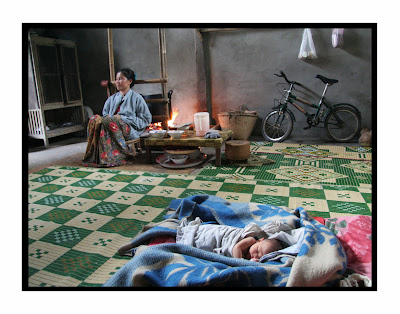
Mother and child - Laos
All photos courtesy and copyright of Sherry Ott.
